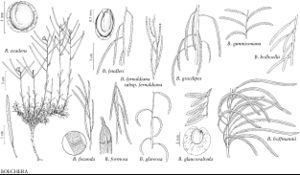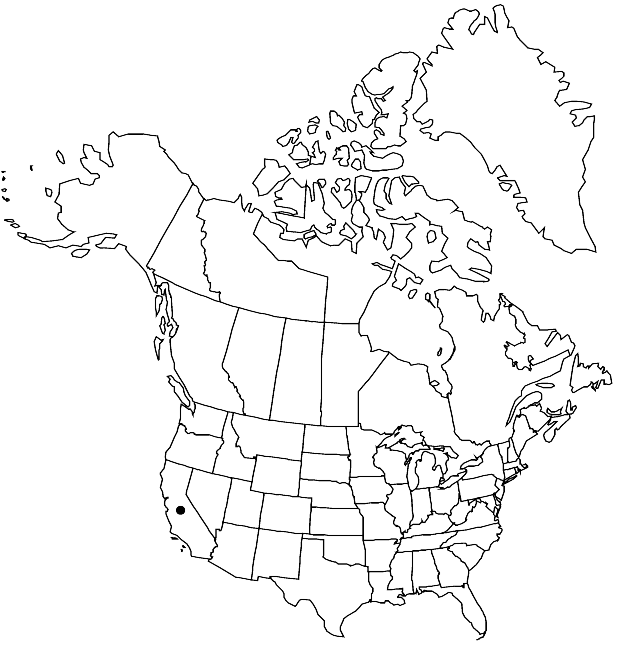Boechera evadens
Harvard Pap. Bot. 11: 66. 2006.
Perennials; long-lived; (cespitose); sexual; caudex woody. Stems usually 1 per caudex branch, arising from center of rosette near ground surface, 1–2.5 dm, densely pubescent proximally, trichomes short-stalked, 2–5-rayed, 0.2–0.6 mm, and sparse, simple ones to 1 mm, glabrous distally. Basal leaves: blade narrowly oblanceolate, 1.5–3 mm wide, margins entire, ciliate along petiole, trichomes (simple), to 1 mm, surfaces densely pubescent, trichomes short-stalked, 4–8-rayed, 0.1–0.2 mm. Cauline leaves: 3–5, not concealing stem; blade auricles 0.5–1 mm, surfaces of distalmost leaves pubescent. Racemes 10–22-flowered, unbranched. Fruiting pedicels divaricate-ascending, straight, 4–8 mm, sparsely pubescent, trichomes appressed, branched. Flowers ascending at anthesis; sepals pubescent; petals white, 3–4 × 0.5–0.8 mm, glabrous; pollen ellipsoid. Fruits divaricate-ascending, not appressed to rachis, not secund, straight, edges parallel, 3–4 cm × 1.2–1.5 mm; valves glabrous; ovules 46–52 per ovary; style ca. 0.1 mm. Seeds uniseriate, 1–1.1 × 0.9–1 mm; wing continuous, ca. 0.1 mm wide.
Phenology: Flowering Jun.
Habitat: Rock outcrops
Elevation: ca. 2600 m
Discussion
Boechera evadens is a sexual taxon that was originally interpreted as a disjunct population of Arabis (Boechera) fernaldiana, but is easily distinguished from that species by having much shorter (3–4 versus 7–12 mm) petals, larger (0.2–0.6 versus 0.04–0.1 mm) trichomes proximally on stems, and shorter (3–4 versus 4–7.5 cm) fruits (see M. D. Windham and I. A. Al-Shehbaz 2006 for additional distinctions). It is known only from the holotype specimen collected near Sherman Pass in Tulare County.
Selected References
None.
Lower Taxa
"elongated" is not a number."thick" is not a number."dm" is not declared as a valid unit of measurement for this property.

